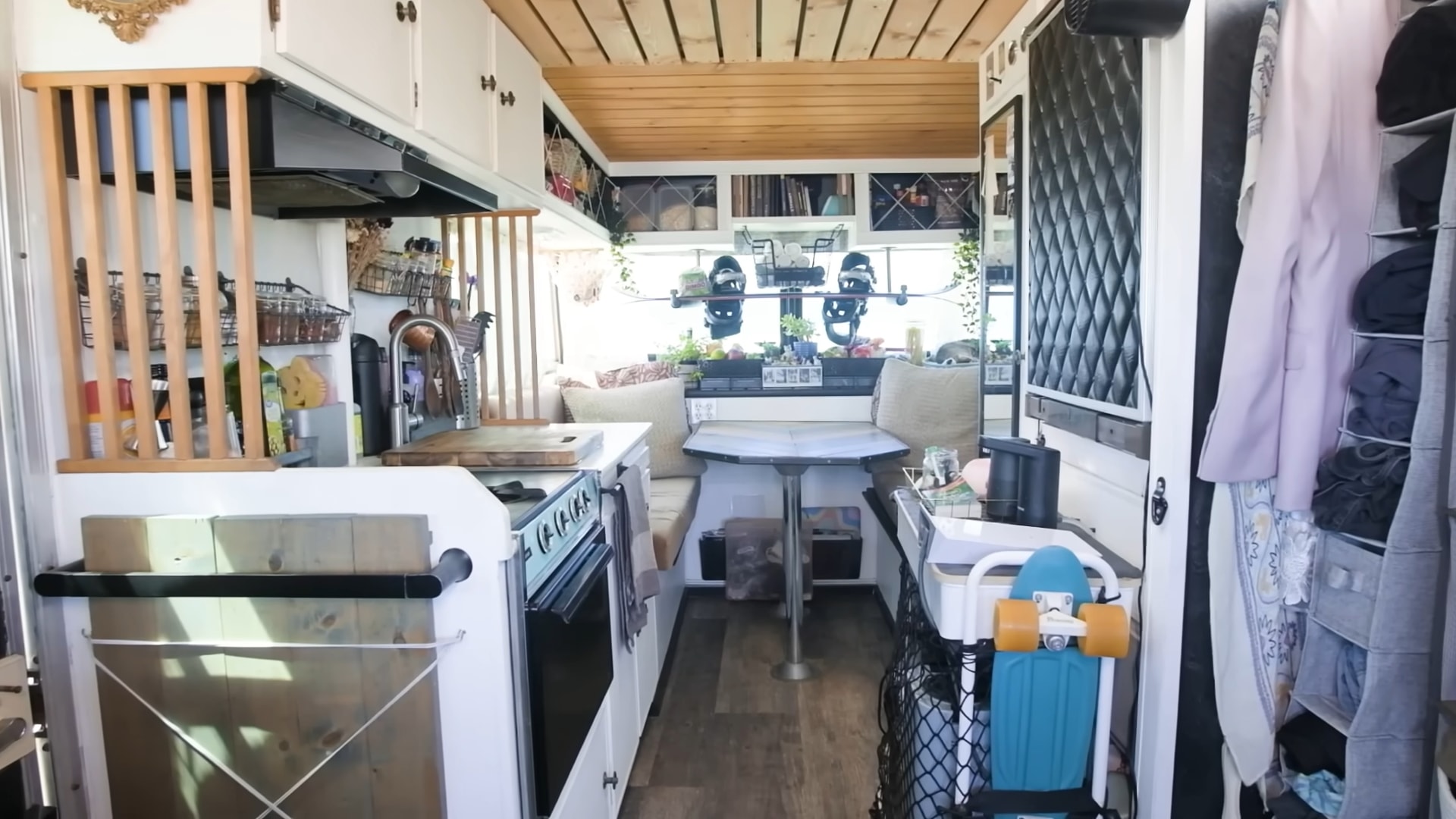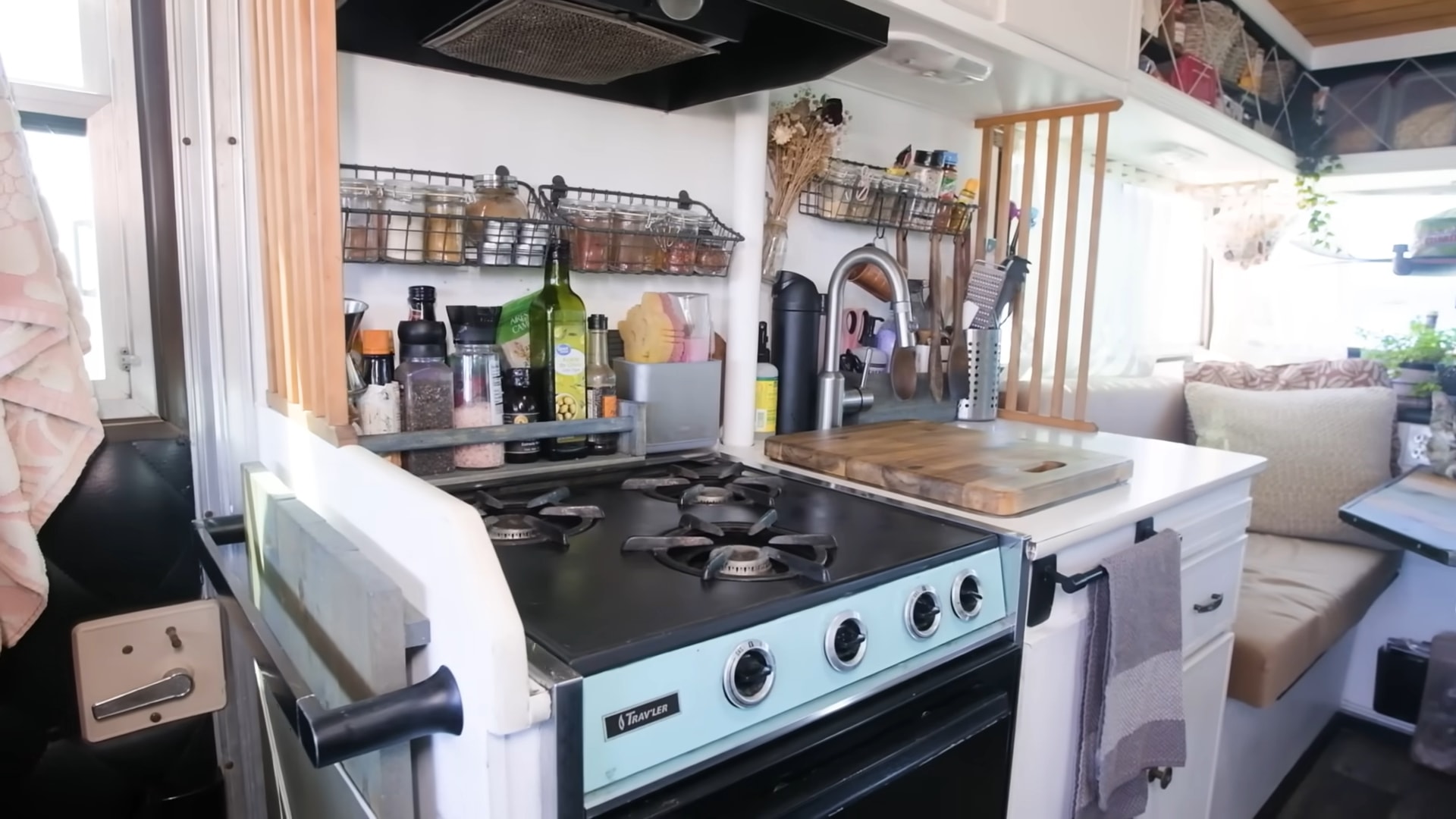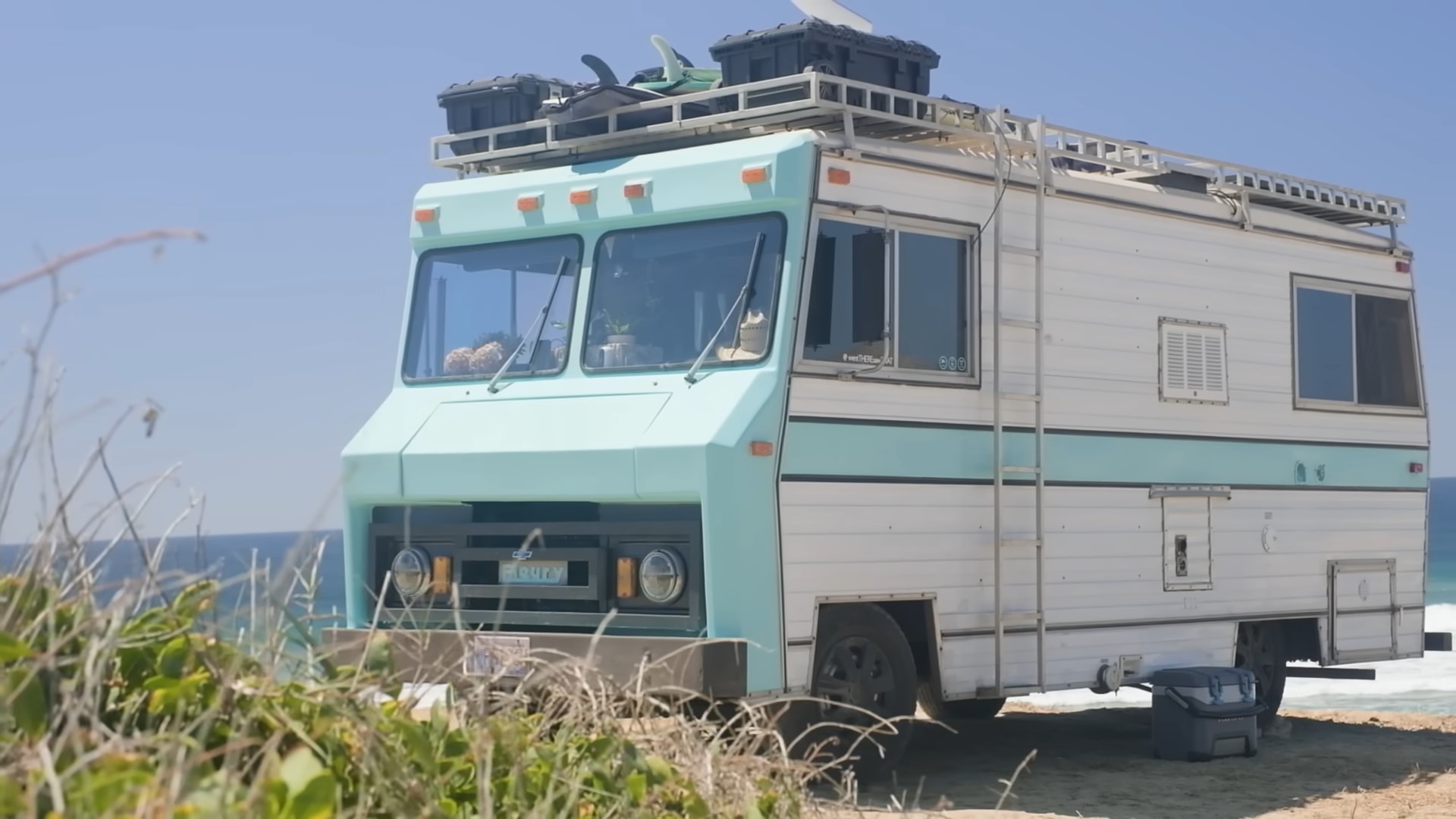Dreaming of a nomadic lifestyle but are constrained by budget? Revitalizing an older RV or camper van presents a compelling alternative to purchasing a brand-new rig. While these vintage vehicles offer financial appeal, they often demand significant investment in time and energy for restoration.
This week, we go into the story of Alex and Ange, a couple who started on a transformative journey with a rare 1974 Chevy Fleury RV. Hailing from Saskatchewan, Canada, the Chevy Fleury is a relatively obscure model with scant online information available.
As we explore their renovation process, we’ll uncover the unique challenges and rewards of transforming this vintage motorhome into a cozy, mobile abode.

Alex and Ange’s RV is a testament to their creative and practical approach to van life. The once standard white exterior has been transformed with a playful baby blue paint job and a custom-built roof rack. This increased platform serves as a multifunctional space, accommodating surfboards, storage boxes, and essential techs like a StarLink satellite and solar panels.
These additions are crucial for maintaining their remote work lifestyle as Senior Visual Effect Coordinators. Demonstrating the RV’s adaptability, the couple has even embraced the expansive roof as an unconventional sleeping area. The interior is equally impressive, showcasing a blend of original charm and modern functionality.
Beyond its aesthetic appeal, the RV’s interior layout is a testament to efficient space utilization. The couple opted to retain the original structure, focusing on revitalization rather than a complete overhaul. By strategically repainting cabinets and other elements, they breathed new life into the vintage aesthetic.
A thorough inspection and subsequent restoration of the ceiling and flooring ensured a solid foundation for their mobile home. The elimination of the original bathroom in favor of a spacious clothes storage area highlights their practical approach to living in a compact space.
While the shower pan remains for occasional use, the couple primarily embraces the freedom of outdoor showering. The addition of a composting toilet further exemplifies their commitment to sustainable living. The RV’s interior is a testament to efficient space utilization. The kitchen, a compact powerhouse, features a three-burner stove, oven, stainless steel sink, and fridge freezer, all seamlessly integrated into the layout.
Overhead cabinets and a tall pantry offer ample storage. The living area is equally versatile, transforming from a cozy lounge with a sizable table into a double bed in mere minutes, thanks to cleverly designed benches. One bench doubles as storage for bedding and conceals the plumbing system, while the other provides additional space for gear.

Open shelving, a snowboard holder, and even dedicated sleeping quarters for the couple’s cats demonstrate the owners’ ingenuity in maximizing every inch. While the kitchen and living areas are well-appointed, the absence of air conditioning and heating might significantly impact comfort levels during extreme weather conditions, potentially limiting the RV’s year-round usability.
Alex and Ange transformed a pre-owned RV into a cozy, self-sufficient home on wheels for a surprisingly modest investment. They purchased the base vehicle for a mere $7,305 CAD, and with an additional $5,000 CAD dedicated to interior renovations, their total project cost came in at a budget-friendly $15,000 CAD.
Prioritizing health and hygiene, the couple decided against using the RV’s original freshwater tank for drinking and cooking. Instead, they repurposed it for dishwashing duties and installed separate, dedicated water tanks in the kitchen. To power their mobile abode, they relied primarily on a combination of 620 watts of solar panels and a 2,000 Wh portable power station, supplemented by a gas generator for those rare occasions when solar energy falls short.

